The tree is down, the lights are out, and the fireworks and festivities are over. It’s normal to feel a little sad after the holidays have passed. January means going back to work, paying off the Christmas bills, and attempting to follow through on those ill-fated resolutions.
For some of us, however, the melancholy runs deeper. That’s because, depending on where in the country we live, the winter and early spring months typically amount to three to four months of cold, grey, and often overcast days, creating the perfect conditions for a type of major depression known as SAD, or Seasonal Affective Disorder.

(StockSnap / pixabay)
SAD can occur in the summer months, as well, but those instances are rare. People diagnosed with this disorder generally have experienced two or more years where seasonal depressive episodes outnumber non-seasonal episodes. Those affected by SAD can sometimes even present as fully healthy outside of the season. But don’t be fooled – when those seasonal episodes do come, they are often severe.
Nobody knows what causes SAD; however, scientists have come up with some theories. One is that the lack of consistent sunlight on the skin can cause a Vitamin D deficiency. In some studies, vitamin D has been linked to the production of serotonin – the brain chemical responsible for feelings of happiness. Exposing the skin to sunlight is said to activate serotonin production, as well. So basically, the less sun, the less serotonin.
Finally, your body tends to produce more melatonin in the dark. Since days are short, and the sunlight is limited, this hormone that regulates the body’s sleep cycles generally increases in the winter. Those struggling with SAD also may overproduce melatonin, making the symptoms of fatigue and sleepiness far worse.
Substance abuse and mental health share a powerful connection. According to the National Institute on Drug Abuse (NIDA), roughly 38 percent of Americans who suffer from Substance Use Disorder also struggle with mental health afflictions like anxiety, depression, SAD, or other mood disorders. Of those with mental illness, around 18 percent have co-occurring substance abuse issues.
Using drugs or alcohol to self-medicate for depression or anxiety can easily lead to addiction and worsen symptoms of SAD and other mental illnesses. And whether you’re diagnosed with a mental health issue or not, pushing through the winter doldrums while in recovery is no easy task.
Some of the symptoms of SAD include:
- Loss of interest in activities you once enjoyed
- Daytime drowsiness, increased sleep; extreme fatigue
- Headaches
- Inability to focus
- Anxiety and irritability
- Social withdrawal, increased emotional sensitivity
- Increased appetite for carbs and sweets
- Weight gain
If you find that SAD is starting to derail your recovery journey, our Utah substance abuse center counselors here at Renaissance Ranch have several recommendations to help you head off a potential relapse.
1. Get Exposure to Sunlight or Phototherapy
Increase your time outdoors when the sun is out. In areas or situations where that isn’t possible, talk to your doctor about phototherapy. This kind of therapy involves spending about 20-30 minutes a day exposed to specialized bright light without UV rays (tanning beds and other lightboxes with UV rays have been proven ineffective for SAD and can cause eye and skin damage).
2. Begin Psychotherapy
Since SAD is a form of depression, it’s a good idea to engage the help of a trained therapist or counselor to help you talk through your issues and develop healthy coping skills. We believe treating your mind and body together is crucial to any good substance abuse rehab program.
Cognitive Behavioral Therapy, or CBT, addresses the irrational thoughts and behaviors we experience when in the thick of a depressive episode and seeks to transform them into more accurate and functional ones. For instance, moving away from ‘all or nothing’ thinking such as, “I made a mistake, so I’m horrible” to “I’m a good person who makes mistakes.”
3. Consider Taking Medication
SSRIs, or Selective Serotonin Reuptake Inhibitors, are antidepressants sometimes prescribed for SAD and other depressive disorders. Since medication can affect each person differently, it’s important to work closely with a psychiatrist to find an antidepressant that works for you. Just because Prozac was great for your friend doesn’t mean it will be right for you.
4. Other Things You Can Do
There are several things you can also do on your own to improve your mood, in conjunction with the above recommendations: Exercise regularly; eat healthy meals and snacks; force yourself to interact with your friends; do things that usually make you happy, like scrapbooking or going out to a movie; set small goals to accumulate easy wins; be patient with yourself.
Depression and anxiety can represent seemingly insurmountable hurdles when mixed with trying to recover from substance abuse. But success in learning how to manage both is well within your reach, whatever the season.
Video

